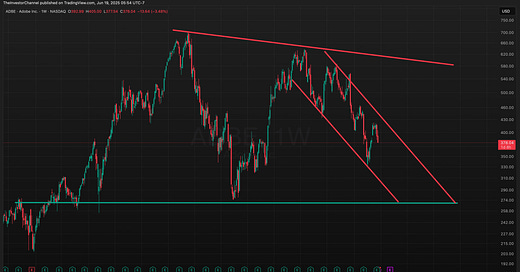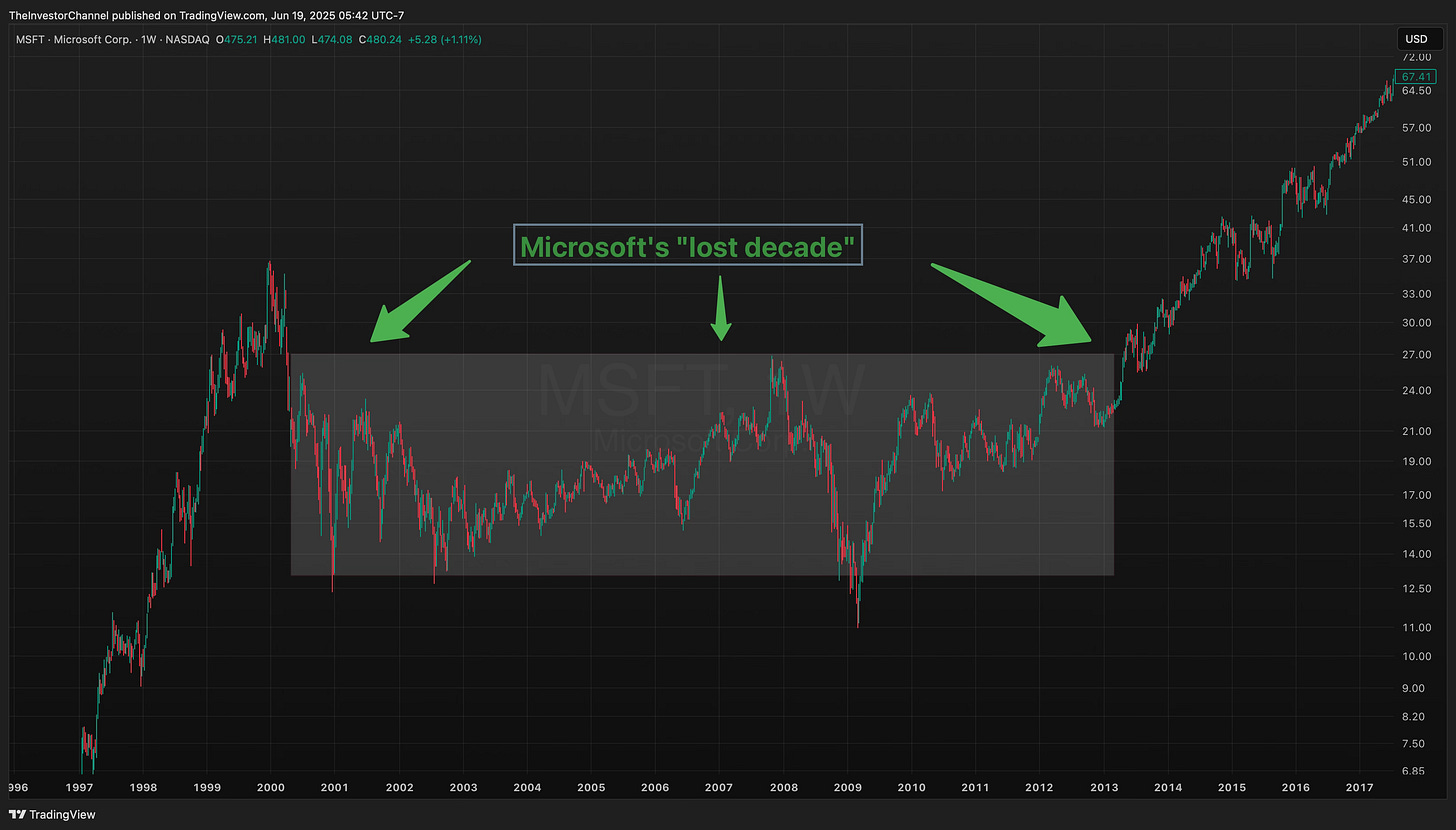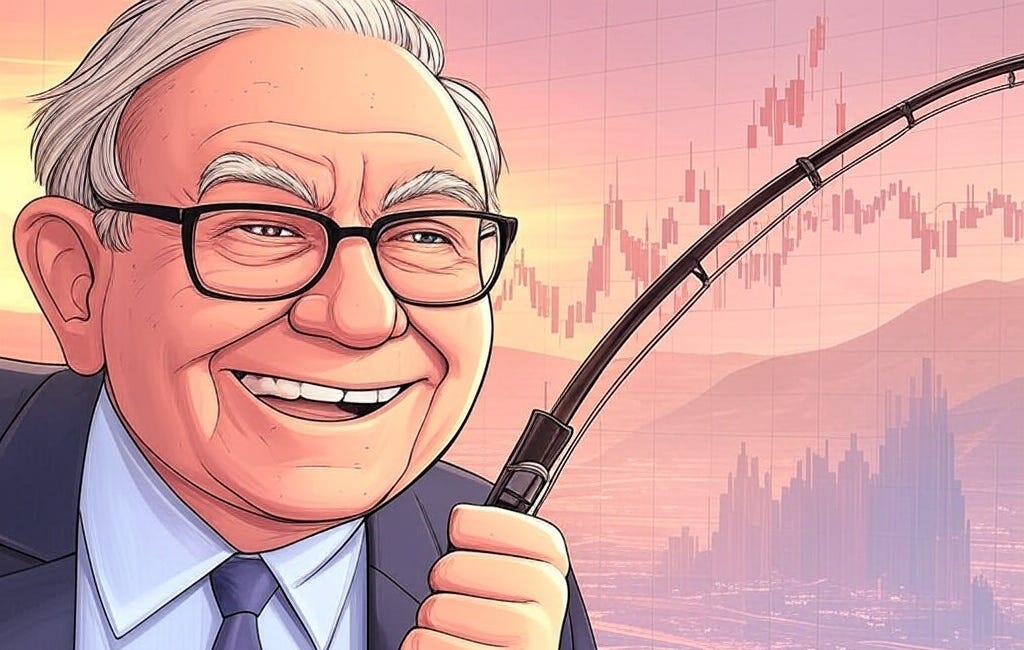Three Reasons I Won't Touch Adobe Stock Right Now
Adobe stock is down 25% this year. The dip buyers are circling. That's a mistake.
Adobe's down 15% this year.
The dip buyers are circling.
That's a mistake.
Here's why I'm avoiding ADBE 0.00%↑ …
Reason #1: Buying Dips Alone Isn't a Strategy
Purchasing stocks solely because it’s declined is a flawed approach.
Even high-quality companies can trade sideways for extended periods.
Microsoft MSFT 0.00%↑ delivered virtually no returns for a decade.
I remember it well … because I owned it!
Here’s the biggest reason why you don’t just buy the dip in stocks like Adobe, or United Health UNH 0.00%↑ …
When genuine opportunities emerge - like the “Liberation Day” selloff in April
You want available capital.
Not funds tied up in underperforming positions hoping for a reversal.
Successful active investing requires discipline.
"Buying the dip" simply because there’s a dip isn't strategy.
Warren Buffett’s Dip-Buying Blueprint: 5-Step Filter for Smarter Investing
Warren Buffett’s Steps to Buying the Dip: Are You Doing It Right?
Reason #2: Adobe's Competitive Moat Has Eroded
Adobe once had dominant market share in creative software.
That advantage has diminished.
I’ve spent the last 20 years building businesses that rely on Adobe software.
Today's landscape includes numerous alternatives.
Often at lower price points.
Canva democratized graphic design.
Figma (which Adobe tried to acquire) transformed UI/UX workflows.
Social platforms like Instagram META 0.00%↑ and TikTok now offer in-app editing capabilities.
This mirrors the disruption we witnessed in traditional media.
Streaming services systematically eroded cable and broadcast television's market share over the past decade.
Investors who bought media company dips during that transition faced prolonged underperformance.
Adobe has similar competitive pressures.
While the overall creative software market continues expanding, so does the number of viable alternatives.
Market share defense becomes challenging.
For investors - accelerating growth in that environment is nearly impossible.
Reason #3: The Chart Looks Terrible
Technical analysis matters. Adobe's chart sucks.
Classic downtrend.
You don't catch falling knives.
You wait for buyers to show up.
This is a simple concept if you think about it differently.
Take for example real estate.
If condos in a building keep selling for less each month, how do you know when the price isn’t going lower?
When one finally sells for more than the previous month.
You see, in real estate … it’s all about the “comp” or comparable sale.
In a declining market - no one wants to buy at a higher price.
That’s why when units sell for higher prices, that gives you a good indication that a bottom in price is forming.
Same logic applies to stocks.
Wait for proof that buyers are willing to pay higher prices.
You won't get the exact bottom. But you'll avoid buying while it's still falling.
For Adobe specifically, you’re waiting for the price to close above $430.
The Enterprise AI Investment Thesis
Adobe's positioning in the current AI software expansion is not great.
Enterprise spending on AI enables software is accelerating rapidly.
However, corporate buyers prioritize solutions that deliver measurable results.
Tools like ChatGPT demonstrate clear productivity improvements for content creation.
AI-powered customer service platforms reduce operational costs.
Adobe's AI implementations, while impressive, don't deliver the same obvious return on investment.
Features like Photoshop's generative fill don't fundamentally transform business operations.
The highest-growth AI software companies are automating entire processes.
Adobe’s AI features aren’t innovative and unique enough.
This distinction matters significantly for enterprise purchasing decisions.
A $14 Billion AI Power Play Could Skyrocket This Stock Many Of You Own!
Mark Zuckerberg is writing a $14 billion check.
Conclusions
I've maintained Adobe software subscriptions for two decades and continue finding value in their products.
So I’m not a hater.
But I’ve been able to scale back using Adobe software.
Many developers and designers I know are too.
The competitive landscape now includes numerous alternatives.
Many with superior user experiences and features that beat Adobe.
Meanwhile, enterprise AI companies are capturing value by delivering transformational business improvements.
I prefer allocating capital toward companies driving industry transformation rather than those defending against disruption.
In AI software investing, ownership of disruptive technologies will outperform ownership of disrupted incumbents.
I share all the stocks I invest in to Equity Empire premium subscribers. I want to thank all of you that have joined.
P.S. It’d be cool if you followed me on social media. Find all my hiding spots below:
Colin







